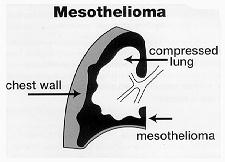Caring for a mesothelioma patient can be quite challenging — emotionally, physically, spiritually, and financially. Whether you're just beginning to deal with your loved one's mesothelioma diagnosis or you've been caring for a mesothelioma patient for some time now, it's a good idea to gather all possible tips and helpful information. Your loved one's physician may have given you an idea of what to expect, and as you strive to provide the best possible care, the choice of where your loved one's caregiving will be provided is fundamental.
Mesothelioma Cancer Nursing Care Provided
There are a number of options for caring for a mesothelioma cancer patient. Your loved one's health, his or her desires and needs, your own needs, and financial factors will all play a part in the determination of where the patient's medical care will be provided. In addition, the location of the caregiving may need to change as your loved one's condition changes. The places where caring for mesothelioma patients takes place usually include:
- At home — Lots of people prefer to spend the end of their lives with their families, at home. Home care may be a feasible option for the whole term of your loved one's care, or it may be appropriate for just part of the process (for instance, in the early stages of the disease or in the final days). Whether or not your loved one has been cared for in another setting at an earlier point, he or she (and you) may want to have the last days spent at home with family. At-home care can usually be supplemented with professional home-care services, including visiting nurses.
- At a hospital — A significant benefit of hospital care is that doctors, nurses, and emergency equipment are always at hand. As a family member, you may also be able to share in the provision of caregiving for a mesothelioma patient at the hospital.
- With hospice care — Hospice care for a mesothelioma cancer patient can be provided in a number of settings: at the patient's home or another residence, or at a nursing home, or at a specialized hospice center. The purpose of hospice centers is to provide comfort and care to the terminally ill. It is often a more warm and hospitable setting compared to hospitals.
- At a nursing home — A nursing home provides medical care around the clock, and if your loved one with mesothelioma cancer needs nursing care that you are not able to provide, a nursing home can be a good choice. Some mesothelioma patients prefer to use the services of a nursing home in order to take the burden of care from their family members.
Private health insurance, an asbestos cancer settlement, an asbestos trust fund, and Medicaid or Medicare may cover part or all of the nursing care at differing facilities, including the home.
Caring for a Mesothelioma Patient
There is much more to learn about caring for a mesothelioma patient, and we're here to help you. Contact mesothelioma treatment center online to arrange an appointment to discuss your circumstances and your needs.


